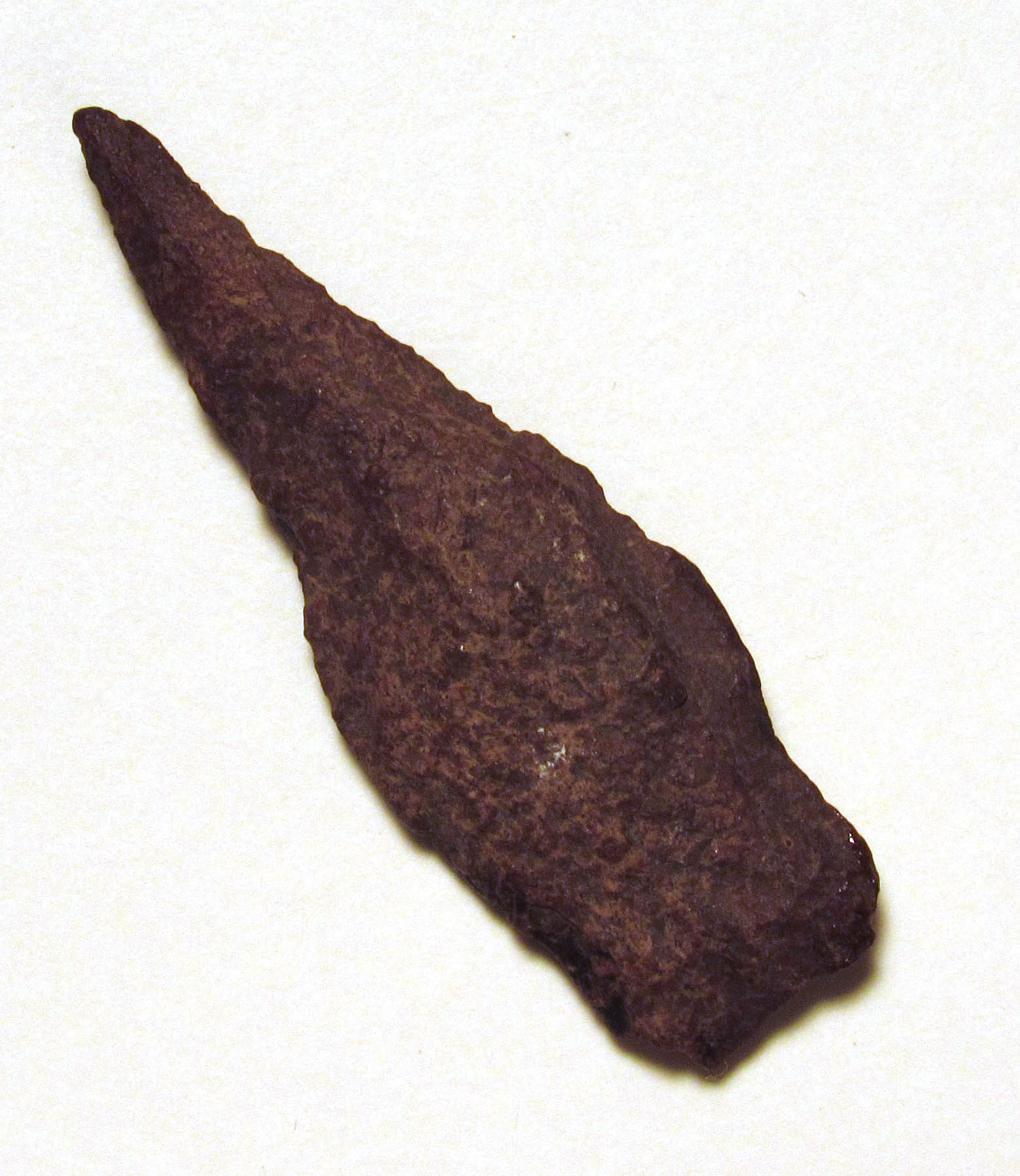Stone Knife or Awl
The original location of this artifact from the Rhode Island Historical Society’s collections is unknown. Ever since Europeans first started occupying the area to the present day, people like to collect Native American artifacts they happen upon. Over time, some of these artifacts have made their way to museums and historical societies without information about where they were found. In this sense, the artifact looses its context, or information about what other archaeological objects or features were near it. Understanding what else was nearby can help archaeologists understand how the tool was used or can give clues as to what was going on at that location in the past. There are now laws that disallow people from taking artifacts from public properties.
The Ethics of Excavation: Ancient Burials and Present-Day Communities
Essay by Rebecca Marisseau, Ph.D. Candidate in the Department of History at Brown University and Pınar Durgun, Visiting Assistant Professor Joukowsky Institute for Archaeology and the Ancient World, Brown University
We study the past not only because it is interesting and instructive but also because, in many cases, it is tied to how we identify ourselves as individuals and as members in communities. Similarly, objects uncovered from an archaeological dig might carry personal or spiritual meaning. Ideally, an archaeological excavation should balance the interests of the archaeologists and respect for people’s beliefs, traditions, and history.
The excavation of ancient Native American burials poses ethical challenges for archaeologists and Native communities. Archaeologists are interested in studying burials because the way people are buried can offer clues to what people believed, how families and clans were structured, and what people wore. However, others, especially those who claim kinship or cultural descent from the group under study, might consider the excavation of burials disrespectful. Not all Native individuals or communities think alike on this issue; some do not want archaeologists to disturb ancestral graves at all, while others are willing to cooperate with archaeologists or even run their own archaeological research programs.1David Hurst Thomas, Skull Wars: Kennewick Man, Archaeology, and the Battle for Native American Identity, (Basic Books, 2000), 209. In any case, over the past two centuries of archaeological practice, Native peoples have had almost no say in what was being excavated, how objects or human remains were handled, or what could be taken away and displayed in museums.
In recent decades, archaeologists have become more sensitive to how their work impacts present-day communities, thanks in large part to the efforts of Native leaders who have spoken out against the lack of protection for Native sites and artifacts.2Ibid., 209-215. In response to Native activism, the United States Congress passed the Native American Graves Protection and Repatriation Act (NAGPRA) in 1990, which required museums and other institutions to record and return human remains and sacred objects that belong to the Native tribes that have the legal right to them. It also requires archaeologists to consult tribes when ancient human remains are found on federal lands and to gain Native consent when excavating burials on tribal lands.3Ibid., 214. Since the passing of NAGPRA, non-Native archaeologists and museums have become more aware of the need for collaboration with Native peoples and tribal representatives in understanding and protecting the past.
Terms:
Ethics: a standard of moral conduct that guides an individual’s behaviors and might be shared by a community.
Native American Graves Protection and Repatriation Act (NAGPRA): a law passed by the United States Congress in 1990, which required museums and other institutions to record and return human remains and sacred objects that belong to the Native tribes that have the legal right to them. It also requires archaeologists to consult tribes when ancient human remains are found on federal lands and to gain Native consent when excavating burials on tribal lands.
Questions:
How might the excavation of an ancient burial site impact a present-day community that claims kinship or cultural descent from the people under study?
Imagine you are an archaeologist hoping to excavate a site of cultural or spiritual importance to a present-day community. What would a responsible excavation look like? Who should have a say in if or how a site should be excavated?
- 1David Hurst Thomas, Skull Wars: Kennewick Man, Archaeology, and the Battle for Native American Identity, (Basic Books, 2000), 209.
- 2Ibid., 209-215.
- 3Ibid., 214.

